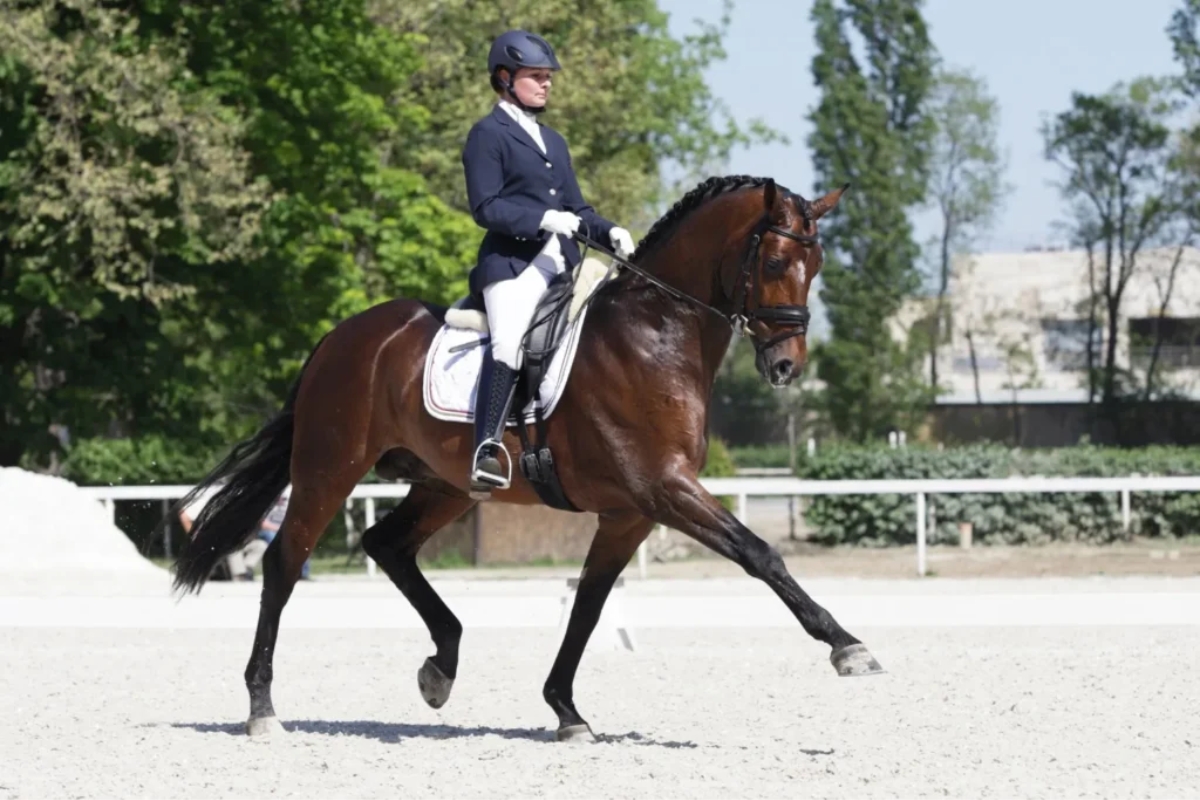Menu

The terms 'leg mover' and 'back mover' have been tossed around in various horse forums over the last decade. But what do these terms mean, how can you see the difference, and does it really matter if a horse is a leg mover, for instance? We'll delve into the debate and would love to hear your thoughts on the subject.
You may know them. Horses with giant gaits and forelegs that jut right up to the sky. These are the spectacular horses that have begun to emerge more and more in international competitions over the past decade. One of the most well-known leg movers ever to exist emerged on the dressage scene in the early 2000s. It was the black, now deceased, stallion Totilas. Some may argue he was the epitome of a leg mover.
The problem with a leg mover can often be that there is a lack of correlation between the front and hind parts of the horse. The connection may seem lost in severe cases. On a leg mover, you can see how the angle of the left foreleg differs from the angle of the diagonally opposite hind leg. The hind legs push backwards, and the back is slightly lowered rather than raised and engaged. The neck is tight and the nasal ridge is behind the vertical.
If you have a horse that tends to high knee lift and a hind part that doesn't quite follow, there is advice to be had. We've looked at two Danish experts' take on how to remedy the problem.
"Looking back at riding 10-20 years ago, there's been a huge development. We've gone from a Fiat to a Ferrari. The problem is, we lack the driving license to handle so much power."
"This new type of horse is what many struggle with today. They're often hypermobile in their joints, which gives them large beautiful gaits with high knee lift and deep backs. It's no use training and riding them as we did in the old days. We need to get better at implementing good and sensible training and not be blinded by it looking good. In other words, we need to spend more time on basic riding and only use the big 'gait gears' when we're far enough into the horse's training for them to bear it."
"The most important thing for a healthy, functioning team is the feeling of harmony and balance. Unfortunately, it's often seen that the cooperation doesn't sufficiently weigh the horse's conditions. I generally miss riders being a bit more willing to compromise," asserts Michael.
"I think there are far too many riders who don't see the horse as an individual, requiring a tailor-made treatment and constant development. In my eyes, the good rider is one who manages to ride many types of horses and adjusts their riding and training amount to the individual horse - and at the same time accepts and respects that the horse is a living creature with low intelligence, but with an incredible memory."
A back mover is a horse that is engaged, moving forward, and using its whole body correctly. There is a clear correlation between the front and hind parts.
You can tell if a horse is a back mover by comparing the angle of the foreleg with the angle of the diagonally opposite hind leg. They should be the same, and you should be able to draw two lines down through the left foreleg and right hind leg, giving roughly the same angle. You can also see that the back is more involved, and the horse's head and neck position is in front of the vertical.
The back mover may not have the same flashy gaits as a leg mover. On the other hand, it finds it easier to work biomechanically correctly and thus carry more of the weight on the hind legs. A back mover is typically less tense, and they are happier in their work. And then the range and angle of the front and hind legs are roughly parallel.
Leg movers find it harder to work biomechanically correctly. Like humans who use their bodies incorrectly, the muscles can degenerate faster, meaning the horse's working life can be significantly reduced. It's akin to people who make the same incorrect lifts day in and day out at their work, and then eventually develop an occupational injury. So, if you have a leg mover at home, it's important that you bear these things in mind in your riding.
The debate is about whether we should let the horse's movements and expressions overshadow its welfare. Do you also think we should consider more how we use the bodies of our beloved horses if we really want to take care of them?
Sources
Gerd Heuschmann 2012: Balancing Act: The Horse in Sport – An Irreconcilable Conflict?
Sacredhorse.com